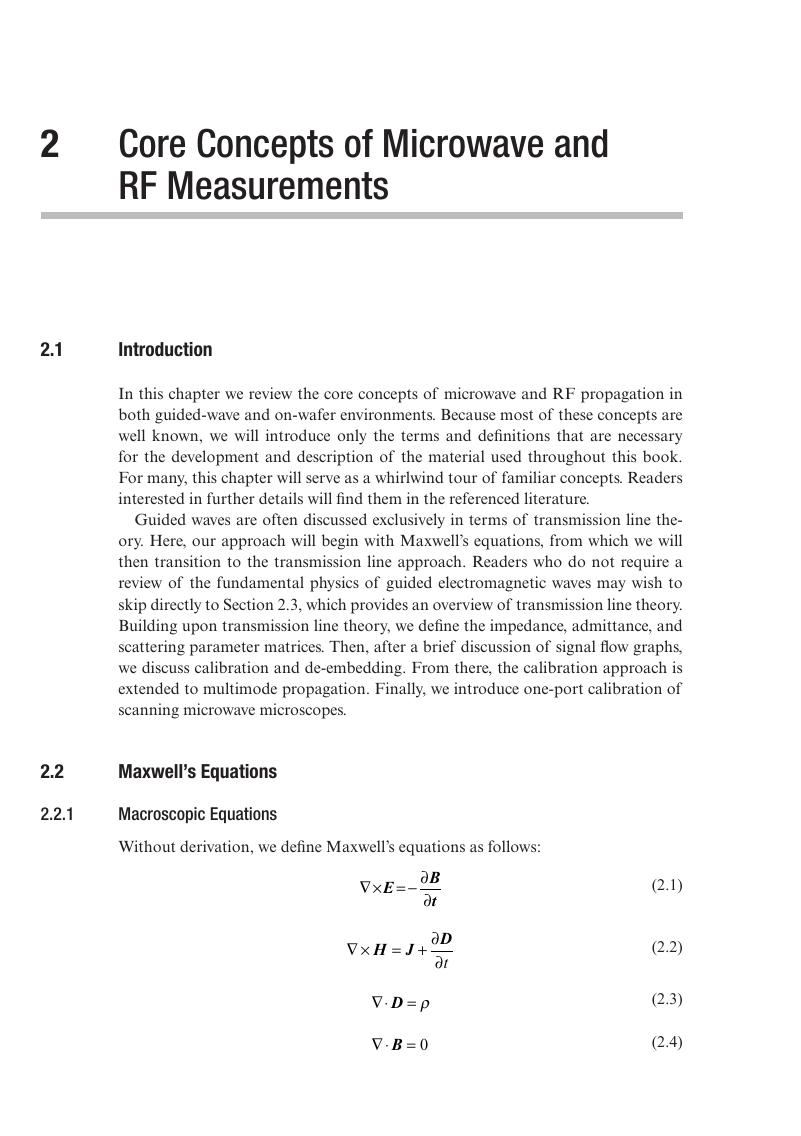Book contents
- Measurement Techniques for Radio Frequency Nanoelectronics
- The Cambridge RF and Microwave Engineering Series
- Reviews
- Measurement Techniques for Radio Frequency Nanoelectronics
- Copyright page
- Contents
- Acknowledgments
- Abbreviations
- 1 An Introduction to Radio Frequency Nanoelectronics
- 2 Core Concepts of Microwave and RF Measurements
- 3 Extreme Impedance Measurements
- 4 On-Wafer Measurements of RF Nanoelectronic Devices
- 5 Modeling and Validation of RF Nanoelectronic Devices
- 6 Characterization of Nanofiber Devices
- 7 Instrumentation for Near-Field Scanning Microwave Microscopy
- 8 Probe-Based Measurement Systems
- 9 Radio Frequency Scanning Probe Measurements of Materials
- 10 Measurement of Active Nanoelectronic Devices
- 11 Dopant Profiling in Semiconductor Nanoelectronics
- 12 Depth Profiling
- 13 Dynamics of Nanoscale Magnetic Systems
- 14 Nanoscale Electromagnetic Measurements for Life Science Applications
- Index
- References
2 - Core Concepts of Microwave and RF Measurements
Published online by Cambridge University Press: 21 September 2017
- Measurement Techniques for Radio Frequency Nanoelectronics
- The Cambridge RF and Microwave Engineering Series
- Reviews
- Measurement Techniques for Radio Frequency Nanoelectronics
- Copyright page
- Contents
- Acknowledgments
- Abbreviations
- 1 An Introduction to Radio Frequency Nanoelectronics
- 2 Core Concepts of Microwave and RF Measurements
- 3 Extreme Impedance Measurements
- 4 On-Wafer Measurements of RF Nanoelectronic Devices
- 5 Modeling and Validation of RF Nanoelectronic Devices
- 6 Characterization of Nanofiber Devices
- 7 Instrumentation for Near-Field Scanning Microwave Microscopy
- 8 Probe-Based Measurement Systems
- 9 Radio Frequency Scanning Probe Measurements of Materials
- 10 Measurement of Active Nanoelectronic Devices
- 11 Dopant Profiling in Semiconductor Nanoelectronics
- 12 Depth Profiling
- 13 Dynamics of Nanoscale Magnetic Systems
- 14 Nanoscale Electromagnetic Measurements for Life Science Applications
- Index
- References
Summary

- Type
- Chapter
- Information
- Publisher: Cambridge University PressPrint publication year: 2017

